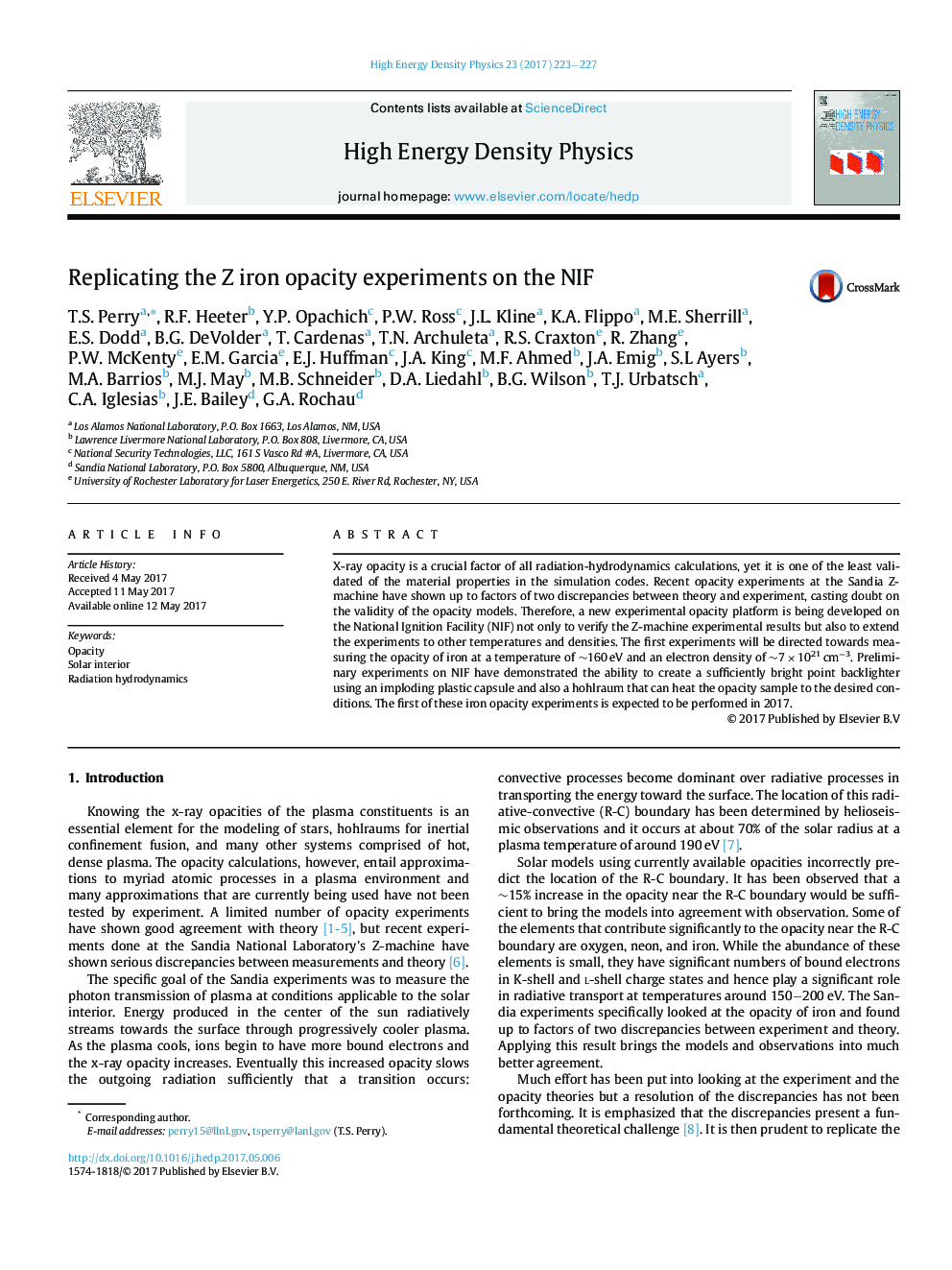| Article ID | Journal | Published Year | Pages | File Type |
|---|---|---|---|---|
| 5486927 | High Energy Density Physics | 2017 | 5 Pages |
Abstract
X-ray opacity is a crucial factor of all radiation-hydrodynamics calculations, yet it is one of the least validated of the material properties in the simulation codes. Recent opacity experiments at the Sandia Z-machine have shown up to factors of two discrepancies between theory and experiment, casting doubt on the validity of the opacity models. Therefore, a new experimental opacity platform is being developed on the National Ignition Facility (NIF) not only to verify the Z-machine experimental results but also to extend the experiments to other temperatures and densities. The first experiments will be directed towards measuring the opacity of iron at a temperature of â¼160 eV and an electron density of â¼7âà1021âcmâ3. Preliminary experiments on NIF have demonstrated the ability to create a sufficiently bright point backlighter using an imploding plastic capsule and also a hohlraum that can heat the opacity sample to the desired conditions. The first of these iron opacity experiments is expected to be performed in 2017.
Related Topics
Physical Sciences and Engineering
Physics and Astronomy
Astronomy and Astrophysics
Authors
T.S. Perry, R.F. Heeter, Y.P. Opachich, P.W. Ross, J.L. Kline, K.A. Flippo, M.E. Sherrill, E.S. Dodd, B.G. DeVolder, T. Cardenas, T.N. Archuleta, R.S. Craxton, R. Zhang, P.W. McKenty, E.M. Garcia, E.J. Huffman, J.A. King, M.F. Ahmed, G.A. Rochau,
